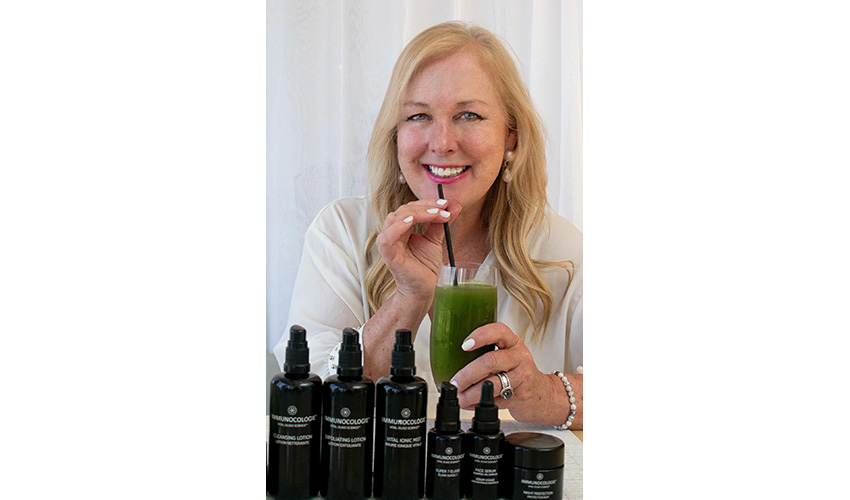Toxic dental materials are various substances that dental professionals have been putting in mouths for years. In 2021, there is mounting evidence showing these substances exhibit cytotoxicity and other adverse effects on health.
What are fillings in teeth made of? The most common type of dental restoration, fillings in teeth are made of various materials like amalgam (mercury). Some fillings are made of porcelain, gold, glass ionomer, or a composite resin that satisfies biocompatibility standards.
Most people know that silver fillings are made with toxic dental materials (mercury), but other orthodontic materials like braces and sealants can contain toxic materials that you do not want in your mouth.
What is the safest dental filling material? The safest dental filling material is made of one of the following:
- Composite resin (BPA-free)
- Porcelain (AKA ceramic)
- Glass ionomer (fluoride-free)
Let’s dive into the most common toxic dental materials, starting with what’s really in your fillings, then revealing other toxic dental treatments.
Toxic Dental Fillings
These 5 dental filling materials may be toxic:
- Dental amalgam fillings (mercury fillings)
- Composite resin fillings
- Glass ionomer fillings
- Resin-ionomer fillings
- Porcelain fused to metal fillings
Some are perfectly acceptable if certain ingredients are left out. But it is difficult to know exactly what is in a particular mixture of composite resin.
This is why it’s wise to go to a biological or functional dentist. They are not only concerned with your dental health, but also your overall health. A biological dental practice will ensure only non-toxic biomaterials are put in your mouth.
Dental Amalgam Fillings (Mercury)
Still the most common dental filling material, mercury fillings have been used for over 150 years in the US. Although the ADA (American Dental Association) claims they are safe, other global health organizations agree with the growing body of evidence showing that mercury fillings are toxic and dangerous.
Mercury fillings are also called:
- Amalgam fillings
- Dental amalgam fillings
- Mercury amalgam fillings
- Silver fillings
- Silver amalgam fillings
Amalgam fillings contain 50% mercury, by weight. Yes, mercury, a well-known toxic substance.
No wonder that mercury fillings are associated with mercury poisoning (mercury toxicity). In fact, the bodies of deceased patients with mercury fillings have 2-12 times the levels of mercury present in their skin than those without mercury fillings.
Mercury vapors from fillings are released most during placement and removal, but also when drinking hot drinks or acidic drinks, chewing, brushing your teeth, or grinding your teeth.
Also, dental amalgam expands and contracts with varying temperatures, possibly leading to fractures or cracking or damaging a nearby tooth.
Dental research has linked exposure to toxic mercury vapors in amalgam fillings with these 30 serious health problems:
- Allergic reactions
- Alzheimer’s disease
- Amyotrophic lateral sclerosis (ALS)
- Anxiety
- Appetite loss
- Autism spectrum disorders
- Autoimmune disorders
- Cardiovascular issues
- Chronic fatigue syndrome
- Depression
- Endocrine disruption
- Hallucinations
- Headaches
- Insomnia
- Kidney issues
- Liver issues
- Memory loss
- Multiple sclerosis
- Nervous system issues
- Oral cancer
- Oral lichen planus
- Parkinson’s disease
- Miscarriage or infertility
- Periodontal disease
- Respiratory issues
- Restless leg syndrome
- Suicidal thoughts
- Thyroid disorders
- Tremors
- Undesired weight loss
Composite Resin Fillings
Composite resin fillings are made with various substances, often plastics. One batch of composite resin will be different than the next. Unfortunately, some composite resin fillings contain BPA or other toxic materials that can be released into your body.
Is dental composite toxic? In the past, dental composites have been toxic. Over the years, manufacturers have removed some of the most toxic dental materials from composite fillings. Dental composite shouldn’t contain toxins like BPA these days, but it’s good to check with your dentist.
The components in composite resin can seep out of the resin and into your system due to chewing, saliva, hot drinks, and other reasons.
Also, the expansion rate of composite resin is often different than teeth, potentially resulting in gaps or even cracking.
Fortunately, composite resin fillings are, in general, less toxic than they ever have been. And many people enjoy that they’re tooth-colored.
Early on, composite resin often contained toxic components that leaked into the oral cavity and into the bloodstream. Over time, manufacturers listened to the science and phased out the toxic composite materials. Modern composite resin is often biocompatible.
Do composite fillings have BPA? Some composite fillings have BPA. Luckily, most manufacturers now know that BPA is toxic and do not use it (or anything that chemically turns into BPA).
Biological dentists may recommend composite resin fillings. However, the composite resin they’re suggesting will be different than the toxic composite resin. (Unfortunately, there aren’t two different terms for toxic and non-toxic composite resin.)
To be safe, composite resin should not contain:
- BPA (bisphenol A)
- BisGMA (bisphenol A–glycidyl methacrylate)
- BHT (2,6-di-t-butyl-4-methyl phenol)
- HMBP (2-hydroxy-4-methoxy benzophenone)
- DPICL (diphenyliodonium chloride)
- TPSb (triphenyl-stibane)
- HEMA (hydroxyethylmethacrylate)
- TEGDMA (triethyleneglycoldimethacrylate)
Glass Ionomer Fillings
Glass ionomer cement fillings are tooth-colored and versatile. Unfortunately, some glass ionomer fillings contain fluoride, which many consider dangerous.
Although fluoride can reverse tooth decay, fluoride exposure has also been linked to various adverse health effects:
- Hypothyroidism
- Increased blood pressure and blood calcium
- Fluoride accumulation in the pineal gland
- Cognitive dysfunction
- Insomnia
- Fatigue
- Muscle weakness
- Preeclampsia (which can result in the death of the expecting mother)
- Earlier onset puberty
- Lower IQ in infants whose mother were exposed to toxic amounts of fluoride
- Increased risk of ADHD in children whose mother were exposed to toxic amounts of fluoride
- Increased risk of autism in children whose mother were exposed to toxic amounts of fluoride
Unlike composite resin, glass ionomer is less susceptible to components leaking out due to saliva. That is a plus.
Like composite resin, glass ionomer mixtures have become less toxic over the years as manufacturers realize some of the components in the ionomer mixtures are not biocompatible and stop using them.
In one study, glass ionomer cement was cytotoxic to tooth and gum cells in humans.
Although new glass ionomer fillings have improved their effectiveness, “studies have indicated that the intrinsic toxicity of glass-ionomer cement is still very high.”
Resin-Ionomer Fillings
Composite resin and glass ionomer may be combined at various ratios to create a hybrid resin-ionomer filling material. This hybrid comes with the benefits and risks of both composite resin and glass ionomer.
Resin-ionomer may contain BPA, fluoride, or other toxic elements, depending on the manufacturer.
However, many modern resin-ionomer fillings contain safe components, such as silica, porcelain, and quartz, and leave out the fluoride.
If your resin-ionomer fillings are recommended by a holistic or biological dentist, you can rest assured that they have made certain there are only biocompatible components going into your mouth — no potential toxins.
Porcelain Fused to Metal Fillings
Although porcelain is widely considered safe and biocompatible, fillings made with porcelain fused to metal fillings have caused allergic reactions on rare occasions.
Also called ceramic, porcelain fillings are great alternatives to mercury fillings. Porcelain is tooth-colored, stain-resistant, mercury-free, and BPA-free. And unlike amalgam and other alternatives, porcelain fillings may last up to 20 years.
However, when porcelain is fused to metal, the heavy metals may seep from the filling substructure into your oral cavity, contributing to heavy metal toxicity.
More of the tooth must be removed to place this filling (compared to porcelain), due to the metal substructure. Most biological dentists agree the less tooth that has to be removed, the better.
Toxic Orthodontic Materials
- Metal braces may be coated with Teflon, which has been associated with hormone disruption and other health problems. According to experts, braces increase your risk of dental caries (cavities), gingivitis, inflammation, and soft tissue damage. All braces may cause white spots (calcifications) on your teeth that are hard to get rid of.
- Ceramic braces are used as an aesthetically pleasing alternative to metal braces. However, ceramic braces are known to occasionally break off natural tooth structure in the removal process. Not only do they cost more than metal braces, but they may also still be coated with toxic Teflon.
- Metal retainers can contain heavy metals that may release into your body, triggering allergic reactions and/or cytotoxicity. Nickel and chromium seem to be of particular concern, according to this in vitro study. Avoid heavy metals in your mouth, especially nickel and chromium.
- Ceramic retainers, also known as plastic retainers, may contain BPA or BPA-forming chemicals. Fewer plastic retainers contain BPA nowadays, but it’s still worth asking about if you or your child ever has ceramic retainers placed.
- Toxic Dental Treatments
- Fluoride treatments may be helpful for special needs children who cannot properly brush their teeth. However, there are risks to using fluoride that are not otherwise worth taking. Not only is fluoride unnecessary to prevent cavities, but it can also trigger allergies, ADHD, lower IQ, fatigue, insomnia, and worse.
- Dental sealants might contain toxic BPA (bisphenol A). This is made worse by the fact that most people who receive dental sealants are children, who are more susceptible to plastic toxicity. Newer sealant materials are generally BPA-free, so ask your dentist if you’re unsure.
- Dental bonding may contain BPA. Some dental bonding composites may be cytotoxic, so be sure to ask your dentist.
- Dental implants are often made of titanium, used for its nonreactivity and durability. However, more and more evidence shows that titanium implants corrode and release heavy metals into your mouth and body — not only titanium, but nickel and aluminum, too. This can trigger heavy metal toxicity and allergic reactions. Try zirconia implants instead.
- Crowns may contain heavy metals to which the patient is allergic. Although this is different from toxicity, allergic reactions are still undesirable and should be avoided. Opt for ceramic crowns and bridges.
- Why Do Dentists Use Toxic Materials?
Dentists still use toxic materials to fill in cavities because they are cheaper and more convenient, and organizations like the ADA continue to endorse them, despite the mounting evidence that these toxic dental materials are triggering adverse side effects in a lot of people.
Although biocompatible, non-toxic alternatives may cost more, the toxic filling materials cost you more in the long run — health-wise and money-wise since you pay for treatment of the toxic side effects.
Make sure you visit a biological dentist, who is concerned with more than just your oral health. They can make sure your dental treatments are non-toxic and safe.
Rejuvenation Dentistry’s founder, Dr. Gerry Curatola, was featured on Dr. Oz, talking about the dangers of toxic mercury fillings. Schedule an appointment at his dental practice, Rejuvenation Dentistry, and his team will ensure you are never exposed to toxic dental materials or dental procedures.




